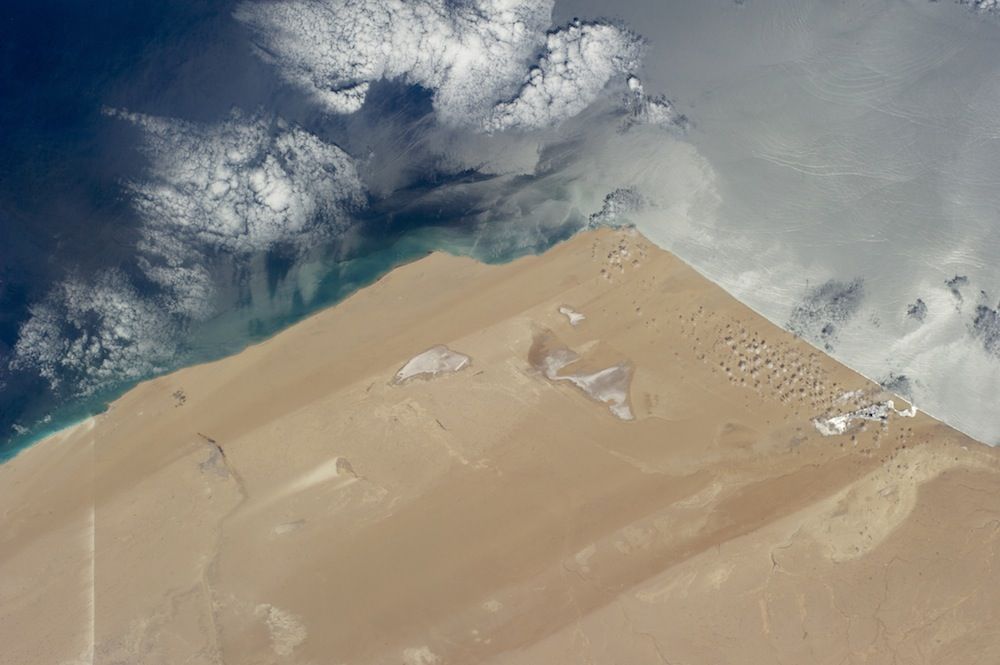Dreamy Desert View Captured from Space (Photo)

Winds sculpt the landscape of the Saharan coastline of West Africa. Here, the Atlantic Ocean meets arid land, and northerly winds push the sand in streaks parallel to the coast.
This image, released today (June 30) by NASA's Earth Observatory, was taken from the International Space Station on May 20. The astronaut's-eye-view reveals puffy clouds off the coast and ripplelike internal waves headed toward the shore. Internal waves are waves that occur almost entirely below the ocean's surface. Warm, less-salty water moves through colder, saltier water; these masses of water can be hundreds of feet tall. Some are more than 550 feet (170 meters) in height, according to researchers from MIT who are studying the phenomenon.
On the surface, internal waves often leave a footprint only a few inches tall, but sunglint, or sunlight reflecting off the surface, highlights these waves in photographs from space, according to NASA's Earth Observatory.
Other desert features stand out in this image. Silvery splotches reveal salt flats called sabkhas. Sand streaks parallel to the coast are caused by winds blowing from north to south, scouring the desert as they travel. Right off the coast, waves erode the sandy shore, staining the near-shore water aqua.
As alien as this desert world may seem, the mark of human hands is visible in this photograph. On the left of the image, a light line running from the inland to the coast is a phosphate transport corridor. Roads, railways and conveyer belts move phosphate along this corridor, for use in making phosphorus, a major ingredient in fertilizers. Phosphorus is also used to make steel and to make compounds used in the manufacture of flame retardants, plastics and pesticides.
Editor's Note: If you have an amazing nature or general science photo you'd like to share for a possible story or image gallery, please contact managing editor Jeanna Bryner at LSphotos@livescience.com.
Follow Stephanie Pappas on Twitterand Google+. Follow us @livescience, Facebook& Google+. Original article on Live Science.
Sign up for the Live Science daily newsletter now
Get the world’s most fascinating discoveries delivered straight to your inbox.

Stephanie Pappas is a contributing writer for Live Science, covering topics ranging from geoscience to archaeology to the human brain and behavior. She was previously a senior writer for Live Science but is now a freelancer based in Denver, Colorado, and regularly contributes to Scientific American and The Monitor, the monthly magazine of the American Psychological Association. Stephanie received a bachelor's degree in psychology from the University of South Carolina and a graduate certificate in science communication from the University of California, Santa Cruz.











